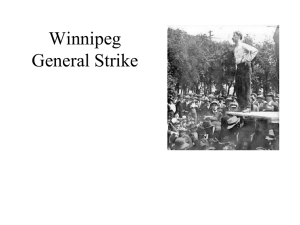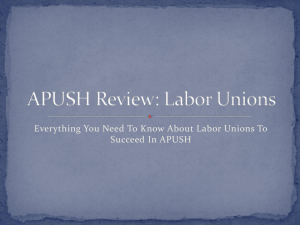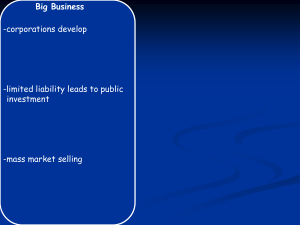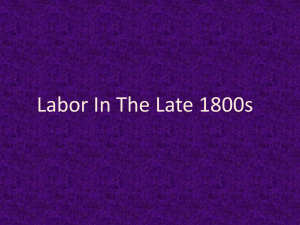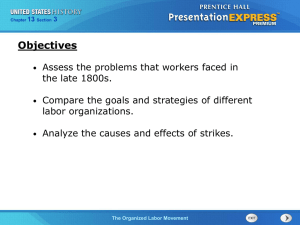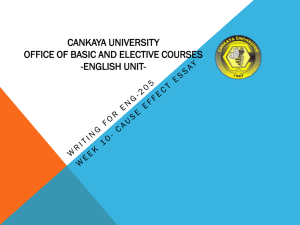Pacific Strike Team Capabilities Brief
advertisement
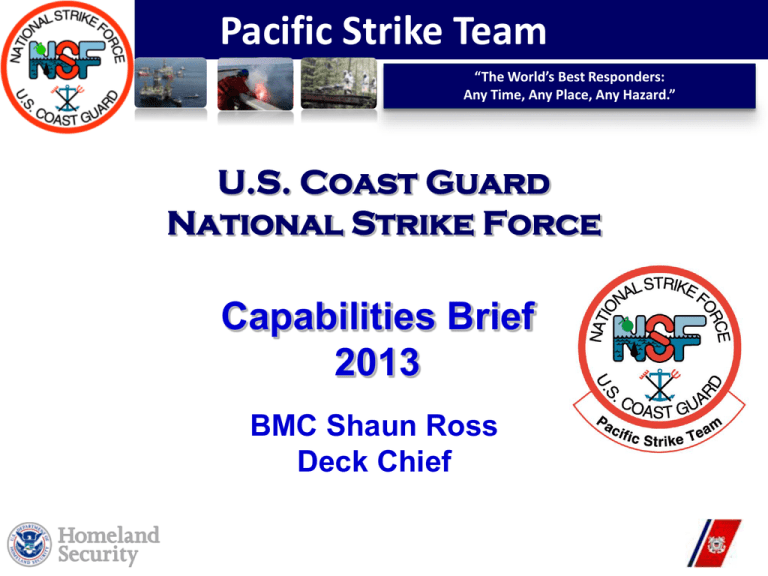
Pacific Strike Team “The World’s Best Responders: Any Time, Any Place, Any Hazard.” U.S. Coast Guard National Strike Force Capabilities Brief 2013 BMC Shaun Ross Deck Chief Pacific Strike Team “The World’s Best Responders: Any Time, Any Place, Any Hazard.” • History, Organization, & Mission • AOR • Operations Profile • Response Capabilities & Support • Recent Cases National Strike Force History National Strike Force Organization Coast Guard Atlantic Area(April 23 2013) National Strike Force Coordination Center (NSFCC) Public Information Assist Team (PIAT) Atlantic Strike Team (AST) Gulf Strike Team (GST) •Over 200 Active Duty and Reserves •Standardized response equipment •Highly trained and experience personnel •24/7, 365 recall status Pacific Strike Team (PST) Organization Chart Ombudsman Industrial Hygienist Facilities Manager Engineer Officer DCC DC Shop EM/ET Shop Active Duty Reservist Civilian 44 02 03 Commanding Officer Command Chief Executive Officer Senior Reserve Officer & Reserve Command Officer Operations Officer Logistics Officer Training Coordinator Assistant Operations Officer HSC Training Chief Deck Officer Chemical Officer MKC BMC MSTC MK Shop BM Shop MST Shop SK Shop YN Shop Training Shop National Strike Force Mission Function as a “Special Team” to assist USCG and EPA Federal On Scene Coordinators and other federal officials while executing responsibilities under the National Contingency Plan (NCP) and the National Response Framework (NRF). Develop and provide highly trained, experienced personnel and specialized equipment for response to oil pollution, hazardous substance releases, and WMD incidents in order to protect public health and the environment. What We Do: – – – – Oil and Hazardous Chemical Response WMD Response including Radiological and BioTerrorism incidents Incident Command / Response Management Support Preparedness Exercise & Event Planning Support Pacific Strike Team “The World’s Best Responders: Any Time, Any Place, Any Hazard.” AST Fort Dix, NJ PST Novato, CA NSFCC/PIAT Elizabeth City, NC GST Mobile, AL NATIONAL STRIKE FORCE AREAS OF RESPONSIBILITY NSF International Response AOR A sampling of NSF support in the International environment Response Policy • NSF Response Standards: – – – – – • CST: Civil Support Team NSF: National Strike Force HMRU: Hazardous Materials Response Unit CBIRF: Chemical Biological Response Force EPA RERT Radiological Emergency Response Team Response Resource Reach Back/Brokering – – – – – • 2 members dispatched immediately 4 members within 2 hours notification 12 members within 6 hours notification Heavy equipment within 4 hours notification 10-person Hazmat Team within 6 hours DOE’s Radiological Assessment Program (RAP) Teams Civil Support Teams FBI HMRU DOD Explosive Ordnance Detachments EPA RERT Facilitate Interoperability – Use standardized training and equipment NSF CSTs HMRU CBIRF EPA RERT Operations Profile • Average Case Load Breakdown: – 60% Chemical Responses – 40% Oil Responses – Personnel average 160~200+ days deployed per year Response Management Support • Provide fully deployable ICS capability to fit any size of response and any type of event – – – – – CO/XO can serve as Designated Incident FOSC (as appointed by FOSC) Trained Planning, Operations, and Logistics Section Chiefs Trained Situation, Resources, & Documentation Unit Leaders Trained Division/Group Supervisors ICS Position Coaching • Evidence collection support • Resource/cost documentation • Technical advice – – – • Plume/trajectory modeling Chemical information Safety and health issues Public Affairs support – – Public Information Assist Team (PIAT) personnel and resources Joint Information Center (JIC) assistance and operation • Mobile Incident Command Post (MICP) – – – – 1 unit at each Strike Team Deployable by road or C-5 aircraft Fully self-contained: Power, heat, air conditioning Communications: UHF, VHF, base station, computers, 32 phone lines, & 2 TVs Response Training & Exercise Support • Providing training in and technical support and expertise for: – Spills of National Significance (SONS) & TOPOFF Exercises – National Special Security Events – PREP Drills – ICS 210, 300 and 400 Courses – Salvage – DOD Civil Support Teams – SCAT (Shoreline Countermeasures) – Special Monitoring for Alternative Response Technologies (SMART) – VOSS/SORS/VOPS – Communications – HAZWOPER Refresher – International Exercises: Panama/MEXUS – Public Affairs/Joint Information Center staffing and training Capabilities • Hazardous Substance & CBRN Response – Level A, B & C Entry Capabilities – Assessment – Mitigation / Countermeasures – Removal/ Decontamination • Oil Spill Response – – – – – – Assessment Booming Skimming Boat Operations SCAT Source Control /Countermeasures – Removal/Decontamination HAZMAT/WMD Response Deployable Loads • Air and road response loads – – • • • Air load self supportive 2-3 days before needing re-supply Carries Personal Protective Equipment to safely assess, mitigate, control, and remove hazards Containment capabilities Remote Sensing HAZMAT Response Trailer (HMRT) • Provides long-term Hazmat Response Support • 5000psi compressor • Satellite including 2-way internet • Elevated observation area • Hot water heater • 40-KW Generator or electrical shore tie Chemical/Biological Agent Response • • • • Level A, B and C entry capability Decontamination (response personnel only) Site assessment, characterization, and mitigation Multi-media sampling (air, water, soil) for field testing and laboratory analysis Evidence/Chain-of-custody preservation • Industrial HAZMAT and Chemical (nerve, asphyxiant, blister) agent identification • Biological agent identification • Secondary device awareness and recognition • EMTs / Site Safety personnel • Contractor oversight Radiological Response • • • • • Alpha, Beta, Gamma and Neutron detection capabilities Site assessment, characterization, and technical assistance with site mitigation Real-time dosimetry Coast Guard Level II Capable Radiological Isotope Identification Device (RIID) – • • e.g. Thermo IdentiFINDER-U Secondary device awareness/recognition Reach back capability • DOE RAP CBP LSS Radiation Safety Officer (RSO) UNCLASSIFIED Oil Spill Response Equipment • • • • • VOSS Inflatable Boom Foam-filled Boom Damage Assessment Tools SMART Gear – Flourometers & DataRams Expertise • • • • • • • • Equipment Deployment Source Control and Removal of Oil Qualified FOSCRs Shoreline Assessment Site Safety Incident Management Salvage Monitoring & Liquid Transfer Contractor / RP Oversight UNCLASSIFIED Oil/Chemical Pumping Capability • Oil pumping capabilities range from light sweet crude to heated asphalt with the Viscous Oil Pumping System (VOPS). – Pump types include: • CCN 150 (centrifugal) Sloan (dewatering) Multi-quip (trash pump) Wildens: M1, M8, M15 (pneumatic diaphragm) Desmi (DOP 250) VOPS (DOP 160/250) for heavy viscous products; includes annular ring for heated water injection Chemical pumping capabilities cover a broad range of chemicals including Acids, Chlorine and Pesticides. CCN 150 with chemical fittings/hoses Wilden pumps with Teflon diaphragms Peristaltic UNCLASSIFIED On Water Resources NSF Inventory •26 ft Trailerable Aids to Navigation Boats (TANB) •Flood Response Boats 2010-2012+ MODU Deepwater Horizon Oil Spill Response • The oil rig suffered a catastrophic explosion, caught fire, and sunk releasing an estimated 67,000 – 110,000 gal diesel/day. • Declared as SONS • PST provided members to fill positions in – – – – – SCAT Team SMART Team ICS (IC and OSC) SORS VOSS Arctic Concerns The PST has been working to improve cold weather oil spill capabilities as vessel traffic increases and the prospects of opening up oil field increases. On New Years Eve 2012, PST members responded to the grounding of the Shell Mobile Off Shore Drilling Unit (MODU) Kulluk. 2011 Davy Crockett The 431-ft vessel ran aground in January as the owner was trying to scrap it. It had been leaking lubricating oil, fuel oil and diesel into the Columbia River for months before clean up efforts began in April. The PST has been providing Site Safety officers to monitor contractors as they dismantle the ship. Currently, this is an ongoing case. 2011 Montebello Survey More than three million gallons of oil was onboard the S.S. MONTEBELLO the morning she was torpedoed by an Imperial Japanese submarine on December 22, 1941. The vessel sank in approximately 900 feet of water, 6.5 miles off of Cambria, California. For over 70 years, the vessel remained on the ocean floor with the fate of its cargo unknown. In 2011 with the use of neutron backscatter technology the UC were able to successfully determine that the S.S. MONTEBELLO did not pose a substantial threat to the marine life and coastline of California 2012 Hurricane Sandy

